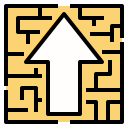Stakeholder and Community Stewardship
We keep a decision log with three columns: request, impact, alternative. On a civic center, it prevented scope drift and captured trade-offs transparently. Clients appreciated clarity, and we protected the daylight atrium that made the building’s heart beat with purpose.
Stakeholder and Community Stewardship
Pop-up exhibits, bilingual flyers, and kid-friendly models opened doors in a wary neighborhood. A grandmother traced sun paths on our site plan and asked for shade near benches. We added trees and a drinking fountain, earning genuine buy-in at the next meeting.


